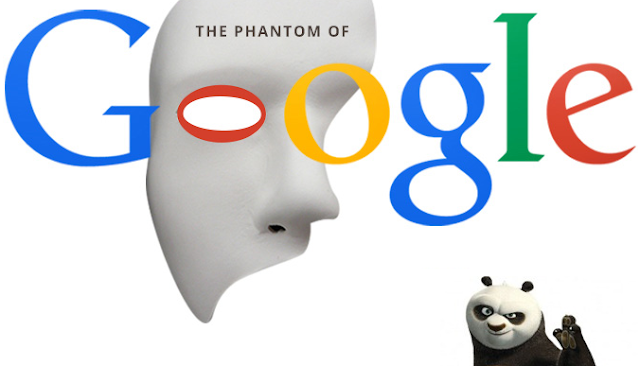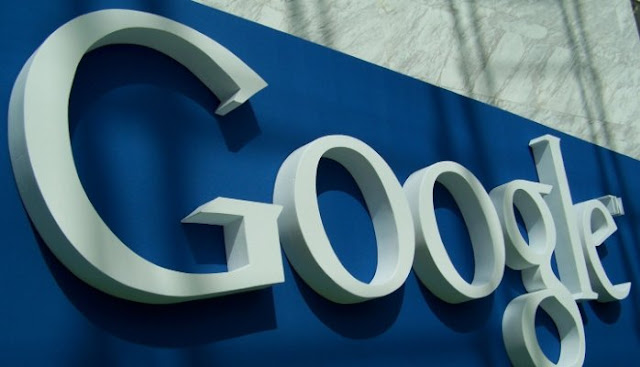iTech Dunya is a technology blog that specializes in tech-related topics.Our GOAL is to produce high-quality content for our millions of readers.
Articles by "Google Updates"
Advertisement
Showing posts with label Google Updates. Show all posts
iTech Dunya is a technology blog that specializes in tech-related topics.Our GOAL is to produce high-quality content for our millions of readers.
Most of you may know google very recently changed it's search algorithm to favor mobile friendly sites. To test if your site is mobile friendly google has a free on-line tool. Just go here and type in your url. Ran this against a few sites I thought were mobile friendly only to find out they weren't.
The good news is if you are running wordpress it's really easy to change themes, or use a theme switcher plug-in to pass google's test. One theme switcher I found really easy to use is Mobile Smart. You install the plug-in, activate, then set it to use a different theme if a user is coming from a mobile device such as an iphone, ipad, etc. This alleviates the hassle of having to re-vamp your entire site at once - though something we all should be doing at least annually anyway.
Google mobile-friendly test site: https://www.google.com/webmasters/tools/mobile-friendly/
iTech Dunya is a technology blog that specializes in tech-related topics.Our GOAL is to produce high-quality content for our millions of readers.
Google has finally confirmed what many search engine optimizers (SEOs) suspected… Google have made a algorithm change to their core search ranking, and it is being dubbed as the “Quality Update”, and formerly referred to as the Phantom Update.
Earlier this month, some search engine optimizers (SEOs) began noticing changes to Google’s search results. Many had asked Google if this due to a Panda Update or any other type of update, but Google replied no. Since then, more reports came in, with the change even being dubbed the “Phantom Update” because something did seem to have happened, even if Google wasn’t acknowledging it.
Google has now said that while no spam-related update has happened, there have been changes made to its core ranking algorithm in terms of how it processes quality signals. However, Google has not provided any details about how quality is now assessed. Search Engine Land explains that, based on past statements from Google, the quality of a particular page or website is determined by a wide range of factors. One possibility is that the search giant is now weighing some of these factors more and others less.
The release came on the heels of rumors that have been circulating concerning a supposed new version of everyone’s favorite discerning Panda. People were so afraid of this new update they began referring to it as the people referring to this new update as the “Phantom” update. Google has confirmed that the update is in fact live and it’s simply called the “Quality Update”, which turns out to be as vaguely threatening as it sounds. The new update is focused on rooting out weak “How to” websites.
It seems that while some websites have been affected in a negative way by the recent changes, there are others who have experienced an increase in organic traffic since the “Quality Update.” Perhaps this is due to the fact that when a page is lowered in the search ranking results, there is another page that is being considered higher quality and is therefore moving up in the results.
Google wouldn’t provide specifics about how quality is now assessed. We know from past statements by Google that quality for a particular page or site is determined by a wide range of individual factors. It could be that Google is now weighting some of those factors more and others less.
This quality update isn’t so much about punishing low-quality sites – although that is a side effect. It is rewarding quality content with higher rankings and then as a result of this, with more traffic. But as these sites with higher quality content are rising in the search results, it naturally means they are pushing other, less desirable content down further in the search results.
While this update has been dubbed the “quality update”, you could also view it as being a reverse Panda. While Panda negatively impacted thin and low-quality content, this quality update seems to positively impact great quality content instead.
Because of the way this update is affecting content, it is likely why many people suspected it was initially a Panda update. After all, for every good page that goes up in the search results, it means another page has to drop down. Since the types of sites that would be negatively impacted by Panda would also lose rankings with this new quality update, it isn’t surprising that many suspected it was Panda.
We have recently seen three significant algo changes have all been changes that are rewarding for good, rather than demoting for the not-so-good.
We have seen the mobile update, which gave a boost to mobile-friendly sites in the mobile search results. The HTTPS ranking signal, although it turned to be less of an impact than many SEOs had hoped, also gave a bit of a boost to HTTPS sites. And now the quality update is rewarding the quality content.
Page level, not site level
As with all of Google’s core algo changes they make, this is confirmed to be on a page by page level. This is good news for those who need to improve their content, as they can focus on the most important pages first.
There was some speculation that it could be impacted on a site-wide level, primarily because Panda is on a site-level, but it is page level.
Page level also has another perk for many webmasters who were relatively unscathed with this update. It is a great opportunity to look through for individual pages that seemed to have been passed over for the boost, and improve the content to see those pages get more traffic. With real time updates, webmasters won’t have to wait too long in order to see the increased traffic, as long as they aren’t impacted by another of the signals for those particular pages.
Real time updates
Again, because this is a core algo change, the updates confirmed to be real time. So webmasters do not need to wait for the push of a button from Google in order to see changes with the quality update. Of course, it also relies on Googlebot crawling updated content and there is always the possibility pages that didn’t receive this quality update boost are also impacted by one of the many other signals in their search algo – in fact, one could argue that it is very likely there could also be something else in play for pages that did not seemingly get a boost, since poorer quality content pages tend to have more issues than just bad content.
For SEOs used to languishing while waiting for an update, like they do with both Panda and Penguin, this is a nice change.
Affiliate linking and sites
There was initial speculation that this could be somehow targeting affiliates, particularly those with an over-abundance of affiliate links on a single page. But again, this seems to be a side effect of other sites being boosted. But just like any other type of site, there are affiliate sites with poor content and affiliate sites that are rocking the quality content, so naturally those with better content will perform better.
Recovery, If you were impacted
Again, this update seems to reward for positive rather than specifically demoting the less-than-stellar content. This is good news for those who saw their rankings go down because it is much much easier to reverse and correct something that is updated in real time, as opposed to dealing with something impacted by Penguin or Panda which requires a button to be pressed for updating.
Recovery-wise, since this latest update is part of Google’s core ranking algorithm, I’m extremely interested in knowing if sites can recover in real-time. For example, as changes are picked up, can the sites rebound quickly or will it take longer (like the way Panda or Penguin victims need to wait for a refresh or update)? User engagement is key with content quality problems, so my guess is that it will take some time for Google to first pick up the changes, and then assess “quality” based on user engagement. Time will tell.
iTech Dunya is a technology blog that specializes in tech-related topics.Our GOAL is to produce high-quality content for our millions of readers.
Be warned – Judgment Day is near. On April 21, Google will launch a search algorithm update that favors mobile-friendly websites. We're calling it Google Terminator because it's hunting outdated, non-responsive websites. If your site provides users with an optimized mobile experience, you’re going to see a boost in SERPS ranking. But if your site requires users to zoom in to read text or if you’re still using outdated features such as Flash, the Terminator will find you. Here is Google’s proclamation about the change:
“Starting April 21, we will be expanding our use of mobile-friendliness as a ranking signal. This change will affect mobile searches in all languages worldwide and will have a significant impact in our search results. Consequently, users will find it easier to get relevant, high quality search results that are optimized for their devices.”
Full announcement here.
Why Is this Happening?
It was just a normal day at the arcade, until Google Terminator showed up. But hey, you’ve got to hand it to Google for constantly striving to provide users with the highest quality, most authoritative, most relevant content from sources that deliver the best possible user experience. That last factor – user experience – is the key here. We’ve seen numerous updates over the years enforcing higher standards in content quality and frequency. Updates like Panda and Penguin changed the game for content marketers. Next week’s change is the first significant update focused on the interface through which content is delivered.
This is Google’s response to the prolific shift in content consumption that smartphones have ushered in. Since the mid 2000s, our growing adoption, infatuation and utter dependence on smartphones has spurred innovative new development platforms, specifically, the invent of responsive design, a term first coined by Ethan Marcotte in his A List Apart paper. Responsive design leverages responsive code. This enables content elements within a web page to resize and realign themselves according to a grid system that represents common screen sizes. Responsive design frameworks, including Bootstrap and Foundation, along with thousands of WordPress and Drupal themes make it possible for one set of code files to “respond” to the screen size being used. This eliminates the need for separate mobile and desktop sites, and provides users with the best possible user experience across all devices.
Google wants people to find exactly what they’re searching for, as quickly as possible. Responsive websites make it easier to do so on mobile phones. With mobile devices approaching 30% of all organic search traffic globally, this is the natural move Google has to make.
Mobile-Friendly vs. Responsive
Quick note: Google is using the term “mobile-friendly” which is much less specific than the technical term “responsive.” The reason for this is that responsive code is today’s solution for ensuring mobile compatibility. It is today’s most effective means to ensure that content presents itself optimally across smaller screens. As developers innovate and brainstorm new ideas, the method may change (think Arnold’s T-100 vs the liquid metal T-1000). What’s most important by Google’s standard is that the website must satisfy the following criteria:
- It avoids software that is not common on mobile devices (like Flash)
- Uses text that is readable without zooming
- Sizes content to the screen so users don’t have to scroll horizontally or zoom
- Places links far enough apart so that the correct one can be easily tapped
Today, responsive frameworks provide the best tools to achieve these ends.
So, What Should I Do?
First step: use this Google tool to check if your site is mobile-friendly. Simply type your website URL into the field, and click “analyze.” The tool will respond positively if your site meets the new criteria. If not, you’ll receive messages indicating areas that will need improvement. If you pass the test, you’ll be in good shape to ride the wave of change. If not, say “hasta la vista” to your prime search page real estate. The fact is you’ll have to update at some point soon in order to restore your past search engine prominence, and keep pace with your competitors. Fortunately, responsive design is now the absolute standard in website design and development, so any designer, developer or creative agency partner will be able provide you with a solution.
How We Can Help
Of course, at Punch, responsive website design is our bread and butter. It’s what gets us out of bed in the morning, and it’s one of the most important ways we make our clients successful online. See some of our recent work here, or contact us today to learn more.
*Disclaimer: the latest Google update is not actually called Google Terminator. We completely made that up. But the update and it's repercussions are real!
About Punch
Punch Digital Strategies is a creative agency for bold brands. We provide digital marketing strategy that helps clients brand for growth and engage with customers online. We design websites that inspire action, and help clients generate leads through content marketing and social media. With services tailored to meet the needs of start-ups, B2C, B2B and non-profit organizations, we make bold brands stand out. Learn more at AddSomePunch.com.
iTech Dunya is a technology blog that specializes in tech-related topics.Our GOAL is to produce high-quality content for our millions of readers.
While Google does not often confirm the algorithmic changes or updates it implements, some credible sources claim that it changes its search algorithm around 500 to 600 times each year.
Admittedly, most of these changes are relatively minor and may have very little effect on website rankings and traffic but the search engine giant also rolls out some major updates from time to time – and this can have a significant impact on the search engine results.
Algorithm Updates: Getting Down to the Basics
Basically, search engine algorithm refers to the unique formula used by search engines to identify the most relevant results to a particular query. This formula is constantly being tweaked and re-tweaked in order to return the most closely matched set of results to a particular query.
Most of the algorithm changes Google implements have a specific focus. Some focus on website content while others put more emphasis on links. It is also important to note that there are many iterations of each major algorithm change so you can expect that Google will continuously make several tweaks to these changes as time goes by.
Some of the Most Popular Google Algorithm Updates
In an effort to come up with the most relevant results to users' queries, Google has implemented several major updates to its search algorithm over the past few years. This includes the Pirate, Penguin, Panda, Pigeon, Hummingbird and Payday Loan Updates. So, how can these updates affect your website? Here are some things you absolutely need to know.
The Pirate Update
The Pirate update aims to prevent sites with multiple copyright infringement reports from ranking well in Google's listings. Google recently launched another update (Pirate 2.0) on October 21, 2014 to combat software and digital media piracy. Since this update was extremely targeted, it resulted in significant drop in rankings to a small group of sites.
The Penguin Update
The Penguin update aims to catch and penalize sites that are spamming their search results through black hat SEO techniques such as link buying schemes. Unfortunately, a good number of web owners, especially those who are using external SEO firms, are not even aware that their websites have paid links. The latest Penguin refresh was released on October 17, 2014 but this time, it only affected less than 1% of all US/English queries.
The Panda Update
The Panda update was first released in February 2011 in an attempt to prevent poor-quality sites (especially those that use keyword stuffing and duplicated content) from reaching the top search results. The latest Panda update (the 27th update, to be exact) which affected about 3% to 4% of all queries was released on September 2014 to reward small and medium-sized sites with good quality content with higher rankings. An earlier refresh which was rolled out in May 2014 affected more than 7.5% of all English-language queries.
The Pigeon Update
This refers to a major search algorithm update which significantly affected the local SEO world. Launched in July 2014, the Pigeon update aims to provide more relevant and accurate local search results by forging closer ties between the core and local algorithms.
The Hummingbird Update
Released in September 2013, the Hummingbird update refers to the change in algorithm that allows Google to understand the intent and contextual meaning of the terms used in a search query.
The Payday Loan Update
This update (Payday loan 3.0) specifically targets queries associated with payday loans, casinos, accident claims and other insurance-related sites that appear to be highly spammy in nature while the earlier update (Payday loan 2.0) targeted specific sites.
Whether you like it or not, you need to be aware of Google's algorithm updates if you want to be rewarded with higher search engine rankings and website traffic. However, as long as you provide your visitors with great content and excellent user-experience, and keep your SEO strategy in line with Google's objectives, these updates should never cause you any troubles.
Admittedly, most of these changes are relatively minor and may have very little effect on website rankings and traffic but the search engine giant also rolls out some major updates from time to time – and this can have a significant impact on the search engine results.
Algorithm Updates: Getting Down to the Basics
Basically, search engine algorithm refers to the unique formula used by search engines to identify the most relevant results to a particular query. This formula is constantly being tweaked and re-tweaked in order to return the most closely matched set of results to a particular query.
Most of the algorithm changes Google implements have a specific focus. Some focus on website content while others put more emphasis on links. It is also important to note that there are many iterations of each major algorithm change so you can expect that Google will continuously make several tweaks to these changes as time goes by.
Some of the Most Popular Google Algorithm Updates
In an effort to come up with the most relevant results to users' queries, Google has implemented several major updates to its search algorithm over the past few years. This includes the Pirate, Penguin, Panda, Pigeon, Hummingbird and Payday Loan Updates. So, how can these updates affect your website? Here are some things you absolutely need to know.
The Pirate Update
The Pirate update aims to prevent sites with multiple copyright infringement reports from ranking well in Google's listings. Google recently launched another update (Pirate 2.0) on October 21, 2014 to combat software and digital media piracy. Since this update was extremely targeted, it resulted in significant drop in rankings to a small group of sites.
The Penguin Update
The Penguin update aims to catch and penalize sites that are spamming their search results through black hat SEO techniques such as link buying schemes. Unfortunately, a good number of web owners, especially those who are using external SEO firms, are not even aware that their websites have paid links. The latest Penguin refresh was released on October 17, 2014 but this time, it only affected less than 1% of all US/English queries.
The Panda Update
The Panda update was first released in February 2011 in an attempt to prevent poor-quality sites (especially those that use keyword stuffing and duplicated content) from reaching the top search results. The latest Panda update (the 27th update, to be exact) which affected about 3% to 4% of all queries was released on September 2014 to reward small and medium-sized sites with good quality content with higher rankings. An earlier refresh which was rolled out in May 2014 affected more than 7.5% of all English-language queries.
The Pigeon Update
This refers to a major search algorithm update which significantly affected the local SEO world. Launched in July 2014, the Pigeon update aims to provide more relevant and accurate local search results by forging closer ties between the core and local algorithms.
The Hummingbird Update
Released in September 2013, the Hummingbird update refers to the change in algorithm that allows Google to understand the intent and contextual meaning of the terms used in a search query.
The Payday Loan Update
This update (Payday loan 3.0) specifically targets queries associated with payday loans, casinos, accident claims and other insurance-related sites that appear to be highly spammy in nature while the earlier update (Payday loan 2.0) targeted specific sites.
Whether you like it or not, you need to be aware of Google's algorithm updates if you want to be rewarded with higher search engine rankings and website traffic. However, as long as you provide your visitors with great content and excellent user-experience, and keep your SEO strategy in line with Google's objectives, these updates should never cause you any troubles.
iTech Dunya is a technology blog that specializes in tech-related topics.Our GOAL is to produce high-quality content for our millions of readers.
In the last few months, Google has been rolling few major/minor algorithmic updates, of which the most prominent ones, about which you must get a fair understanding are Phantom and Panda 4.2.
Google Phantom
While Google Phantom is not as massive as many past Google updates, it still affects a good percentage of search results. Reports suggest that some of the market giants have also suffered a huge negative impact from this update.
iTech Dunya is a technology blog that specializes in tech-related topics.Our GOAL is to produce high-quality content for our millions of readers.
In a Google Webmasters conference which came out earlier this year, Google announced that they make around five algorithm updates a week. This is a staggering amount of updates, resulting in an average of over two hundred and fifty a year, and bombarding SEOs with a constant pressure. Luckily, over ninety percent of these are relatively small, however, every once in a while a large or major update sneaks past our guarding eyes.
To find out our predictions for the big 5 read more on our new magazineUnderhood
iTech Dunya is a technology blog that specializes in tech-related topics.Our GOAL is to produce high-quality content for our millions of readers.
Google Maps Reviews Has a 4,000 Character Limit -Did you know that there is a max character limit of 4,000 characters when leaving a review on a business or organization within the Google Maps local pages?
Google Maps Update Makes Cities More Searchable-Google's new updates to its Maps app allow for more control for business owners along with more efficient restaurant searches and sharable directions.
Google Sending Mobile Usability Warnings to Huge Number of Webmasters- Google sending notifications to webmasters with sites that are not mobile friendly.
There is much in pipeline will keep you updated. :)
iTech Dunya is a technology blog that specializes in tech-related topics.Our GOAL is to produce high-quality content for our millions of readers.
Language used by Google has been updated for ad disapproval in Gmail ads. Gmail ads came out of beta in 2015 after two year of testing and previously known as Gmail Sponsored Promotions. Most of us have simply no idea about the long list of content restrictions on Gmail ads. Let’s see restrictions in Gmail’s ad content.
Have a look at the type of content you can’t promote on Gmail ads.
- Alcohol and alcohol branded content
- Racial or ethnic info
- Get rich quick
- Sexual orientation
- Religion
- Politics
- Adult dating
- Adult-oriented content
- Relationship support
- Gambling
- Weight loss
- Cosmetic procedures
- Sale of medical devices
- Medical services
- Adoption
- Suicide prevention
- Funerals and bereavement
- Computer monitoring and spy software
- Legal services (lawsuits)
- Legal services, family and criminal law
- Body-type and personality-type targeting
- Health conditions and concerns
- Public records
- Business security investigation
- Substance abuse
- Scare tactics
- Spiritual abilities and guidance
- Financial hardship/debt relief
- Using Google and Google services
- Other restrictive categories determined at Google’s sole discretion
Subscribe to:
Comments (Atom)









